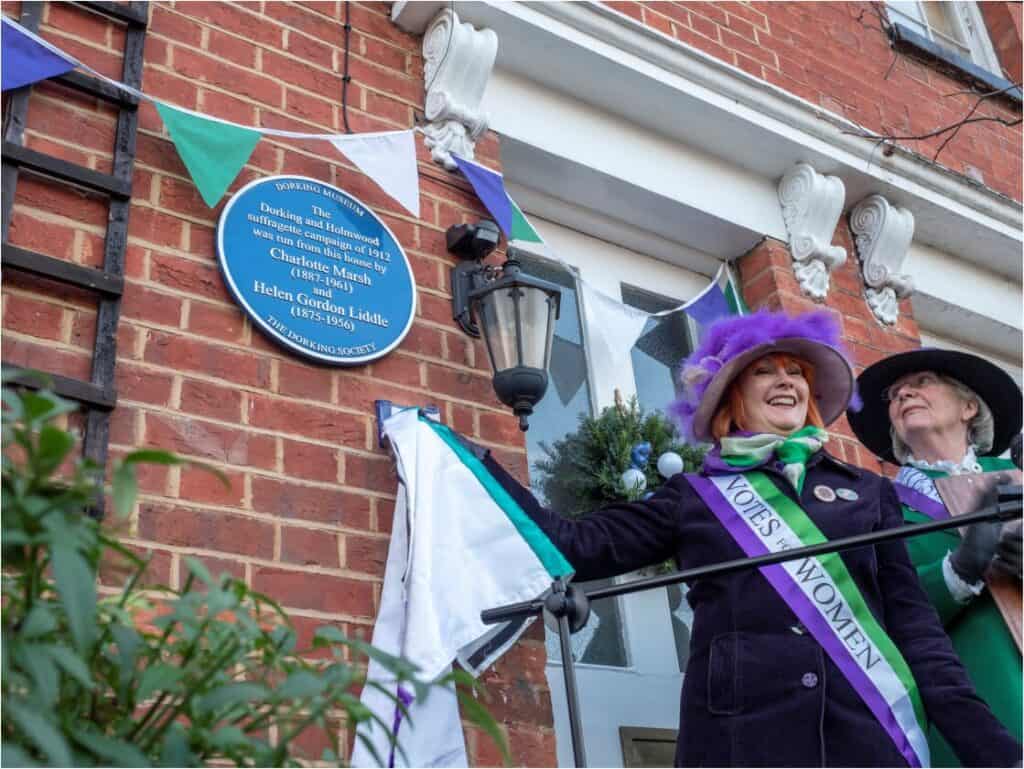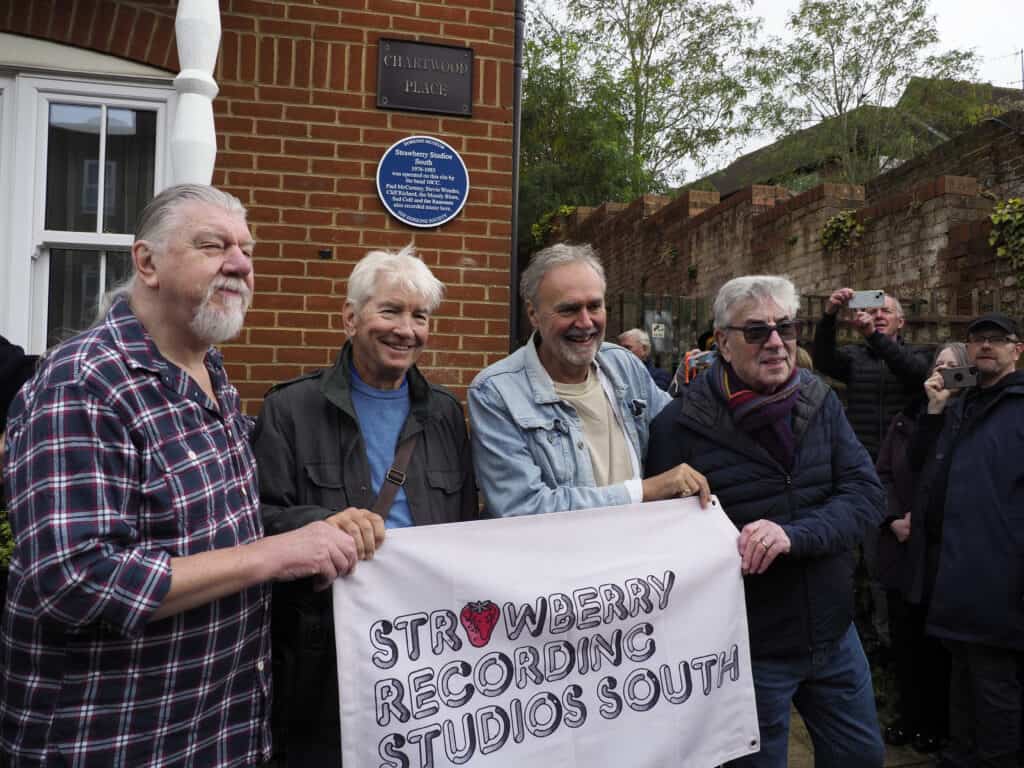
The Museum runs a commemorative blue plaque scheme in the town and villages to recognise local buildings with links to events or people of historical significance. Since 2018 the Museum has unveiled blue plaques to mark the centenary of the vote being granted to women. The plaque at the Dutch House in Holmwood celebrates the lives of Emmeline and Frederick Pethick-Lawrence, leaders of the women’s suffrage movement and campaigners for peace and social justice; the plaque at 43 Howard Road, Dorking, marks the headquarters of the Dorking ‘suffragette’ campaign of 1912. In 2023 the Museum unveiled plaques on the Rob Walker Formula 1 Racing Team’s workshop at Tutts Close and on the site of the home of the aeronautical engineer Beatrice Shilling on South Street.


In 2024 a blue plaque was unveiled on the site of Strawberry Studios South, established by the band 10cc in 1976 and used by numerous recording artists including Paul McCartney, Stevie Wonder, Cliff Richard and the Ramones. Original member and studios founder Graham Gouldman performed the honours with the current line up of the band
This film by Sean Macreavy captures the spirit of the day

If you would like to nominate a premises with strong links to a person of significance for consideration please get in touch on [email protected]
The criteria for consideration are:
-
- The person to whom any plaque is dedicated should have been born in and/or spent a significant part of their life in the area covered by the remit of the Dorking Society as defined on the Society’s website.
- Where the period of the candidate’s residence at the proposed plaque location is less than 5 years an exceptional case for the significance of the period in the candidate’s life and career must be made.
- The candidate must have been dead for a period of at least 20 years before a plaque will be considered.
- A plaque will only be placed where it can be seen from the public highway and will generally be placed on a building, rather than on a wall or gate pier.
- Only one blue plaque per candidate will be considered.
- No more than 2 blue plaques will be placed on any one building.
- Nominations will be considered for candidates who are of significant standing in a regional, national or international context; and are understood to have made some important positive contribution to human welfare and happiness or the sum of human knowledge; and their achievements should have made an exceptional impact in terms of public recognition; or there shall be strong grounds for believing that they are regarded as eminent and distinguished within in their own profession or calling
- Nominations will be considered for buildings that are associated with a group of individuals or with specific historical events.
- No candidate will be accepted or rejected on grounds of their race, gender or sexual orientation, though the selection team will have regard to the balance of representation of its plaques.
- Candidates will not be considered for commemoration at their places of work, education, military service, worship, medical treatment or in respect of other short-term associations except in exceptional circumstances.
- Supporting evidence will be considered for all nominations; candidates may be turned down at the discretion of the Society/Museum if a subject’s historical significance cannot be established or if the subject’s connection to a surviving building in the district is not felt to be strong enough.
- The Society/Museum will only approve as many nominations as financial resources allow.

